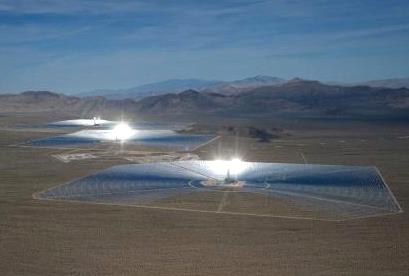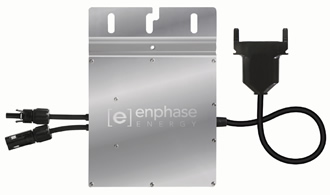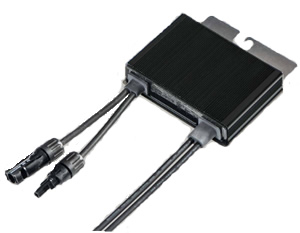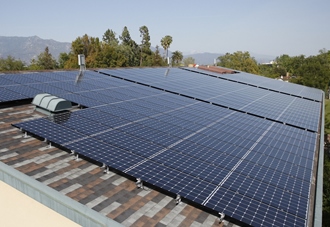Welcome to the
Run on Sun Monthly Newsletter

In this Issue: |
March, 2015
Volume: 6 Issue: 3
Pasadena Solar Rebates Plummet!Pasadena Water & Power (PWP) is about to slash its rebates by as much as 55% effective May 1 - the first rebate reduction in three years. Here are the details... A Model of StabilityWe have said it before and we will say it again, our hometown utility gets the highest marks for running the best, hands down, rebate program around. Their folks are responsive, they have offered a consistent program since we got into this business, and their rebates have been among the highest offered in our service area. The present rebate rates: $0.85/Watt for residential and small commercial, $1.60/Watt for small non-profit systems have been at that level since 2012 - even while system prices dropped by 25%. (For large systems > 30 kW, the commercial rebate was 12.9¢/kWh of actual production paid over five years, while the non-profit version was 24.2¢/kWh.) But all good things must end, including these great rebates - and they will, come May 1. The Rates They are a Changin'
Leaving Money on the Table...So what do these rebate reductions really mean? Let's look at a few examples. Residential project - 5 kWA typical residential project of 5 kW (AC) that submitted a rebate application before May 1 would secure a rebate worth $4,250 (as opposed to na da in SCE territory). That same system will only receive a rebate of $2,250 - leaving an even $2,000 on the table. Ouch! Non-Profit project - 50 kWA 50 kW non-profit project would earn, over the next five years, a rebate worth approximately $92,400. But after May 1, only two years of payments will be made worth just $44,600 - a 52% reduction, leaving $47,850 blowin' in the wind. Double ouch! The one side benefit, since this project is smaller than 100 kW (even though it is over the old, 30 kW threshold) it could qualify for the up-front rebate of approximately $39,200 at the time the system is commissioned - less money overall, but you get it faster. Commercial project - 150 kWA commercial project of 150 kW under today's rebates would earn roughly $148,000 over five years, but for rebate applications submitted after May 1, that rebate drops to just $66,900, a reduction of 54.7% leaving nearly $81,000 waving bye-bye. Brutal. So... Don't Just Sit There!All is not lost, yet. We still have a month and if you act RIGHT NOW you can still take advantage of the higher rebate rates! To lock-in the higher rebate, we need to get your energy usage, do a site evaluation, send you a proposal, have you accept the proposal and sign a contract, and we need to get your rebate application on file before May 1. (I feel a bit like our friends at KPCC - "we need 67 people to call in the next five minutes to meet this challenge...") Yeah, that's a fair amount of work in a short time, but if you jump on this opportunity, we can make it happen and you can save some serious money! So don't miss the boat... Call us, or click on the "Let's get started" link here to begin. |
“Residential clients could lose $2,000 or more if they miss the May 1 deadline…”
Get your copy of
Commercial Solar:
Step-by-Step
from
Run on Sun
Founder & CEO
Jim Jenal

Now available on Amazon.com
in both
Print & Kindle versions.
Bonus - Buy the Print version…
Get the
Kindle version for Free!
Commercial Solar:
Step-by-Step
from Run on Sun
Founder & CEO
Jim Jenal

Now available on Amazon.com
in both Print & Kindle versions.
Get the Kindle version for Free!
Who has the Edge? 3 Reasons to Pick Enphase over SolarEdgeSolarEdge has gotten a fair amount of buzz this week thanks to their IPO, but it made us think that maybe it was time to revisit the question—who really has the edge: DC-to-DC "optimizers" like SolarEdge or Enphase microinverters?
In our view this is a bit of a "no-brainer" and it really comes down to the following three reasons: Reason #3—Integrated Grounding — In every solar array, all metal surfaces have to be grounded for safety. Enphase microinverters now feature integrated grounding, which eliminates the need for a separate equipment grounding conductor. SolarEdge does not have this feature and, depending on the jurisdiction, may require the use of a dedicated copper conductor to be run from one unit to the next. This increases both labor costs as well as part costs (copper is expensive these days!). Far better to have that grounding built-in at the factory than assembled on the roof. Reason #2—Easier Installation — Beyond the need for that equipment grounding conductor, the SolarEdge system requires the installer to not only mount the optimizers on the roof beneath each panel, but it also requires the installer to mount one or more heavy (51 to 88 pound) inverter(s) on the wall. In contrast, Enphase combines everything into one unit, so there are no heavy inverters to mount to the side of the client's house. Reason #1—Greater Reliability — The number one reason for us at Run on Sun is the greater reliability you get from using Enphase. Frankly, the SolarEdge approach combines the worst of both alternative approaches (i.e., string inverters versus microinverters). You are still putting power electronics in the demanding environment of a roof, AND you have combined that with a single point of failure with the inverter back on the ground! When you use Enphase microinverters you eliminate that single point of failure and you are going with the industry leader in creating reliable, roof-mounted power systems. Put all of that together, and we think Enphase microinverters provide the greatest value to our clients, which is why we feature them in all of our solar power systems, despite the occasional "buzz" other approaches might generate. |
50% Renewables by 2030...How Will California Do It?? - Part 1California has a long-standing reputation as a clean energy trendsetter. The state leads the nation in solar energy usage, energy efficiency overall, cleaner cars and energy storage. Currently on track to reach our goal of one third energy derived from renewable sources by 2020...Governor Jerry Brown kicked it up a notch in January by proposing California achieve an unprecedented 50 percent energy from renewable sources by 2030. How will California accomplish such an ambitious target? This is the first in a series of blogs in which Run on Sun will address the challenges and possible solutions to reaching 50% by 2030 as opportunities unveil. 50% by 2030: Part 1 - Maximize Urban Spaces
Ivanpah Solar Electric Generating Station While rooftop solar is great for offsetting the usage of those fortunate enough to be able to invest in an array, most people tend to think utility-scale solar requires wide open spaces only available in remote parts of our state. The best example being Ivanpah, the world's largest solar power plant - generating 345 megawatts on five square miles near the Cali/Nevada border. However, growing to 50% renewables using vast spreads of desert solar arrays has the potential to harm ecosystems. Far away solar farms also incur enormous infrastructure costs just to transport the power from the source to your toaster. Fortunately a new study provides evidence that we needn't look further than our urban back yards to find sufficient space for solar. Stanford researchers published their findings in the March edition of Nature Climate Change:
The urban landscapes we design are already great at capturing the sun's rays, as evidenced by the heat island effect. It turns out we have the capacity to develop enough solar power to meet three to five times California's demand just by utilizing urban flat spaces such as carports and rooftops. Obviously developing small and utility-scale solar in our built environment greatly improves efficiency and cuts infrastructure costs by generating power directly where it is used. As the study's authors note, it's important to remember there will always be trade-offs. It's not an all-or-nothing, urban-or-rural question but looking more closely at the opportunities for solar in our urban backyards should be a priority. |




